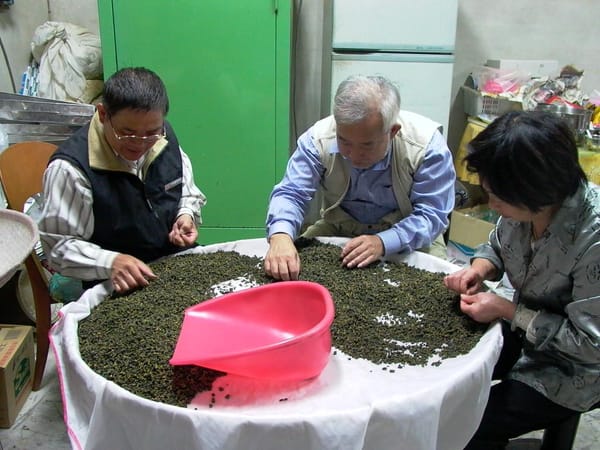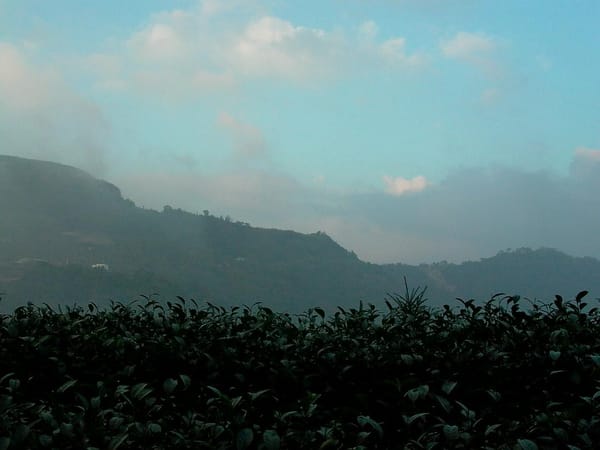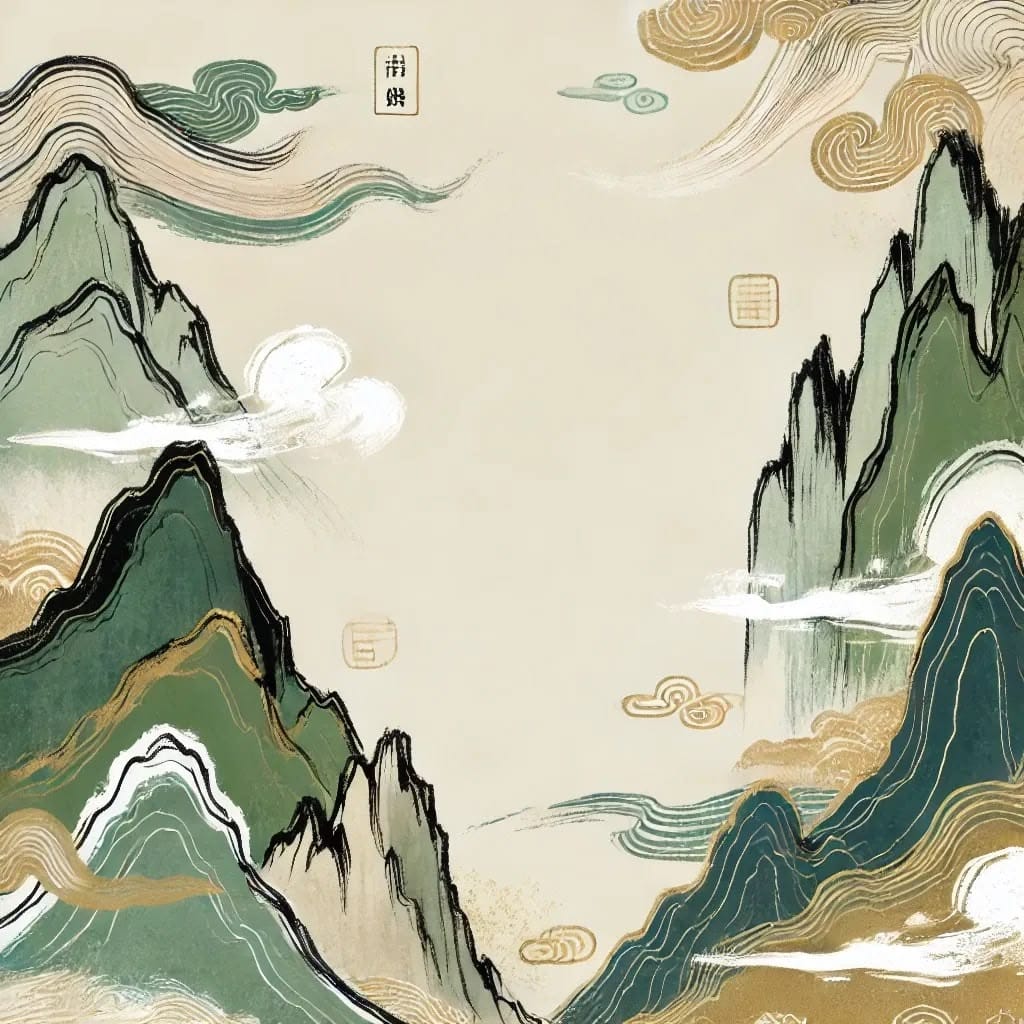You’ve been drinking tea for most of your life. You might even spend thousands of dollars per pound and frequently visit tea mountains for firsthand experience. But how well do you truly understand Taiwan’s high mountain oolong tea? When you see a shop sign that says “High Mountain Oolong Tea, Direct from Origin,” how confident are you in recognizing the true taste?
In his book Taiwan High Mountain Oolong Tea, tea master Chi Zhongxian presents six seemingly simple yet deeply revealing questions. Each answer uncovers the interaction between climate, harvest seasons, and subtle production details that define Taiwan’s unique tea quality.
Are you ready for the challenge? Let’s assess your real knowledge of Taiwan’s high mountain oolong tea through these six essential questions.
Question 1: How many harvest seasons are there each year for high mountain oolong tea?
This basic question actually conceals complex climate science and tea plant physiology.
Standard Answer:
Taiwan’s high mountain oolong tea has four main harvests: Spring, Summer, Autumn, and Winter. However, this isn’t a one-size-fits-all answer. Each growing region, depending on elevation, follows its own seasonal rhythm.
Take Lugu Dong Ding Tea for example—it’s harvested five times a year: spring (around Grain Rain in mid-April), summer, autumn (after the Start of Autumn in mid-August), winter (after the Start of Winter in mid-November), plus a transitional picking period.
Elevation Makes a Difference:
Harvest timing must be adjusted according to elevation. In tea regions like Hehuan Mountain, which are above 2,000 meters, the temperature drops significantly after October. Tea buds can no longer grow to a harvestable size, so the winter tea must be picked by September.
In contrast, Alishan’s mid-elevation gardens (around 1,300 meters) enjoy milder temperatures and can continue harvesting into mid-November. This timing discrepancy often misleads consumers—if a vendor claims to sell fresh Hehuan Mountain winter tea in December, you can be sure it's inaccurate.
Question 2: What is the dominant cultivar for high mountain oolong tea?
This question dives into the history of Taiwan’s tea breeding and market trends.
The Classic: Qingxin Oolong
Traditionally, Qingxin Oolong is regarded as the best cultivar for oolong tea. It grows in a slightly open canopy shape, with tightly spaced, elongated oval leaves. It’s ideal for making Pouchong and high mountain teas, and is mostly found in western Taiwan’s high elevation areas.
The Disruptor: Jin Xuan
In the 1980s, the Taiwan Tea Research and Extension Station introduced Jin Xuan (TTES No. 12), reshaping the market. With higher yields, longer harvest windows, and a distinctive milky aroma, Jin Xuan gained rapid popularity.
Return to Tradition:
Interestingly, in the past five years, consumer preference has shifted back to traditional cultivars like Qingxin Oolong. Jin Xuan’s fragrance doesn’t store well, and consumers increasingly seek teas with longer shelf life. Currently, Jin Xuan high mountain tea prices are about 20% lower than those of Qingxin oolong.
Question 3: What does “shan tou qi” (山頭氣) mean in high mountain oolong tea?
“Shan tou qi,” or “mountain energy,” is the most essential yet elusive characteristic of Taiwan’s high mountain oolong tea.
The Science Behind “Shan Tou Qi”:
This term refers to the graceful and lingering flavor that emerges from Taiwan’s unique terroir. It’s a key differentiator that cannot be mimicked elsewhere.
Environmental Factors:
High mountain soils are rich in organic matter, especially in newly cultivated areas. The cool, misty environment slows growth, allowing more amino acids and aromatic compounds to accumulate.
Climatic Influence:
Large day-night temperature differences promote the accumulation of internal compounds like sugars and amino acids, enhancing the tea’s sweetness and lingering aftertaste.
Processing Technique:
Modern techniques like light withering and light fermentation are used to highlight the fresh aroma and clarity, giving high mountain oolong its distinct flavor profile.
Question 4: What’s the difference between Alishan’s Shi Zhao and Zhangshu Lake tea regions?
This question tests your geographic literacy of Taiwan’s high mountain tea-growing areas.
Shi Zhao:
Located in central Alishan at around 1,300 meters elevation, Shi Zhao features moderate slopes and sandstone-shale soils. Development began in the 1980s, led by the Lin brothers who introduced Qingxin Oolong and Wuyi cultivars, later adding Jin Xuan.
Shi Zhao hosts several production teams like “Zhulu,” “No. 2 Group,” “Shi Zhao Zhenglu Tea,” and “Alishan Dong Ding Tea Group,” each with distinct branding.
Zhangshu Lake:
Though also at 1,300 meters and part of the greater Alishan system, Zhangshu Lake differs in microclimate, soil, and geography. These differences result in subtly distinct flavors between the two regions.
Consumer Confusion:
Shi Zhao alone offers multiple brands—Zhulu, Zhenglu, Dinghu—and when combined with neighboring Zhangshu Lake teas, consumers often struggle with brand identification. This reflects the complex branding landscape of Taiwan’s high mountain tea industry.
Question 5: Since high mountain oolong tea is all hand-picked, does that mean machine-harvested tea isn’t high mountain oolong?
This question addresses common misconceptions about harvesting standards.
Why Hand-Picking Matters:
Yes, high mountain oolong tea is known for its meticulous hand-picking standards—typically one bud with two leaves. Hand-picking offers clear advantages:
- Selective harvesting: Only the ideal bud-leaf combo is chosen
- Leaf integrity: Avoids damage caused by machines
- Real-time judgment: Workers assess maturity and quality on the spot
Strict Time Windows:
Harvesting must be done promptly within narrow seasonal windows. During these times, temporary workers flood the mountains, while factories operate 24/7.
Machine-Harvested Tea’s Place:
Though machine-picked tea doesn’t meet the highest standards, it’s still used for mid- to low-grade teas. It serves a market niche focused on cost-efficiency and large-scale production.
Question 6: Is one-bud-two-leaves picking the only requirement for top-grade high mountain oolong?
This question evaluates your grasp of quality benchmarks.
Scientific Basis of One-Bud-Two-Leaves:
While this is the basic picking standard, “top-grade” tea involves much more.
Detailed Harvest Criteria:
Beyond just one-bud-two-leaves, top tea requires “matched open leaves” or that the second leaf has expanded to at least two-thirds the area of the first. Ideal buds are plump, sun-exposed but not sunburned.
Seasonal Influence:
Spring and winter teas outperform summer and autumn harvests, even under identical picking standards.
Craftsmanship Matters:
Every processing step—sun withering, indoor withering, kill-green, rolling, and drying—impacts quality. Poor craftsmanship can ruin even perfectly harvested leaves.
Holistic Evaluation:
In addition to picking, one must consider:
- Cultivar suitability
- Harvest season
- Tea master’s skill
- Garden management
- Proper storage
Test Result Analysis and Study Tips
1–2 correct answers: You know the basics, but deeper learning is needed. Read expert books and visit tea regions to gain experiential knowledge.
3–4 correct answers: Solid foundation. You understand high mountain oolong well. Time to refine your tasting skills and sensory accuracy.
5–6 correct answers: You’re an expert-level consumer, combining theory and practice. Consider diving into tea history or working in the tea industry.
Practical Use: Avoiding Tea Traps
Knowing this isn’t just for showing off—it helps you dodge common pitfalls:
- Time traps: Spot harvest dates that don’t make sense
- Cultivar traps: Understand aroma, price, and storage traits
- Region traps: Differentiate similar-sounding tea origins
- Grade traps: Evaluate quality beyond a single label
Final Thought: The Spirit of Lifelong Learning in Tea
These six questions only scratch the surface. True tea expertise blends knowledge with sensory experience. It’s through repeated tasting and reflection that one truly enters the world of high mountain oolong.
As Chi Zhongxian says, “Only when you buy the right tea will you find joy.” By learning and practicing, not only can you buy authentic high mountain oolong at a fair price, but you’ll also savor the profound, cloud-kissed flavors of Taiwan’s mountaintop gardens—making each sip a moment of life’s purest delight.



